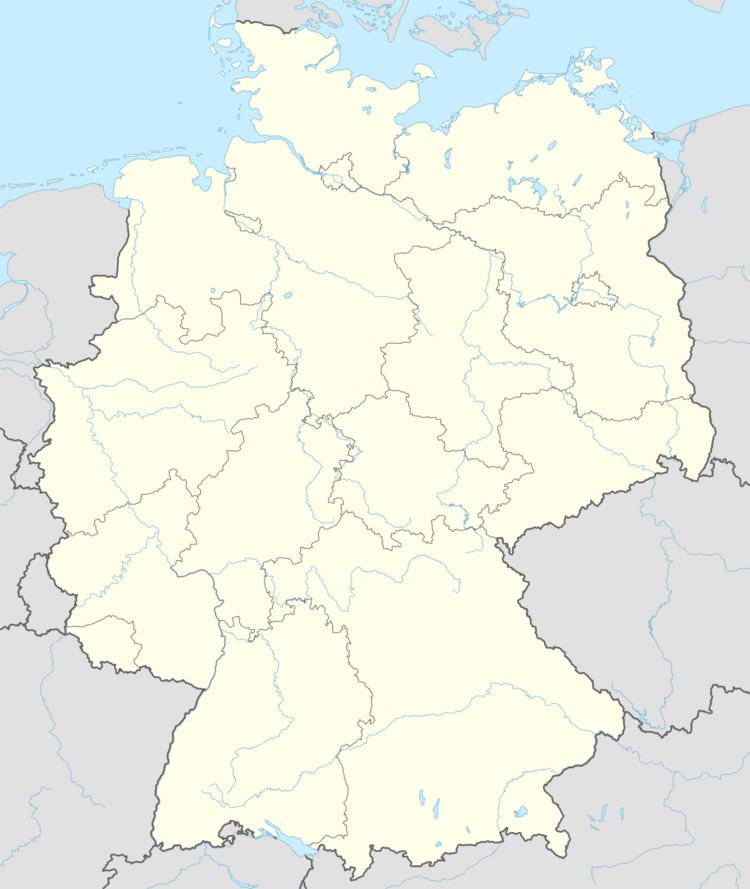Time zone CET/CEST (UTC+1/+2) Area 6.7 km² Population 161 (31 Dec 2008) Dialling code 06765 | Elevation 400 m (1,300 ft) Postal codes 55490 Local time Thursday 4:59 PM Postal code 55490 | |
 | ||
Weather 13°C, Wind W at 24 km/h, 70% Humidity | ||
Henau is an Ortsgemeinde – a municipality belonging to a Verbandsgemeinde, a kind of collective municipality – in the Rhein-Hunsrück-Kreis (district) in Rhineland-Palatinate, Germany. It belongs to the Verbandsgemeinde of Kirchberg, whose seat is in the like-named town.
Contents
- Map of 55490 Henau Germany
- Location
- History
- Municipal council
- Mayor
- Coat of arms
- Buildings
- Economy and infrastructure
- References
Map of 55490 Henau, Germany
Location
The municipality lies on the western edge of the Soonwald, a heavily wooded section of the west-central Hunsrück, at an elevation of 400 m above sea level, above the Kellenbach.
History
Bearing witness to Henau’s very early history are a stone hammer and a loom weight unearthed within the municipality’s limits. These are now kept at the Hunsrückmuseum in Simmern.
In 1316, Henau had its first documentary mention in a document from Count Simon II of Sponheim. The Koppenstein Castle ruin, found within the municipality’s limits, held town rights beginning in 1330, but had fallen into disrepair by the 16th century. Beginning in 1794, Henau lay under French rule. In 1815 it was assigned to the Kingdom of Prussia at the Congress of Vienna. Since 1946, it has been part of the then newly founded state of Rhineland-Palatinate.
Municipal council
The council is made up of 6 council members, who were elected at the municipal election held on 7 June 2009, and the honorary mayor as chairman.
Mayor
Henau’s mayor is Hermann Kilz jr., and his deputies are Helmut Becker and Rosemarie Ebert.
Coat of arms
The German blazon reads: In geteiltem Schild oben in Grün ein schreitender, herschauender, rotbewehrter silberner Löwe (= schreitender Leopard), unten blau-golden geschacht, belegt mit einer silbernen Schnalle, besetzt mit roten Edelsteinen.
The municipality’s arms might in English heraldic language be described thus: Per fess, vert a lion passant guardant argent armed and langued gules and chequy azure and Or an arming buckle of the second studded of the third.
The lion (Löwe) is perhaps somewhat confusingly also called a leopard in the German blazon. This confusion also arises in English heraldry, with “leopard” often being the word used in earlier times for a cat charge in this particular attitude, namely “passant” (that is, striding along). James Parker, though, holds that “lion” was the usual term for both in later times, and that practically the same creature was meant, anyway. Whichever the cat is meant to be, the charge is drawn from the arms once borne by the Knights of Steinkallenfels, who were as early as the 12th century the lords of the Kellenbach high court and held lands in Henau, which itself was part of the high court’s territory. The cat also recalls the Knights of Kellenbach, who were among the Steinkallenfelses’ descendants, and in the 13th century, were also part-owners of the Kellenbach high court. The “chequy” pattern below the line of partition refers to the Counts of Sponheim. It was they who held Koppenstein Castle, now within Henau’s municipal limits, and they also held a share of the Kellenbach court. The buckle stands for yet another knightly family, the Knights of Schmidtburg, who were likewise part-owners of the Kellenbach high court, and who later also came into ownership of Koppenstein Castle.
Buildings
The following are listed buildings or sites in Rhineland-Palatinate’s Directory of Cultural Monuments:
Economy and infrastructure
The once dominant form of agriculture has all but disappeared, and one large company works almost all farmlands. Above the village is a big quartzite stripmine.
